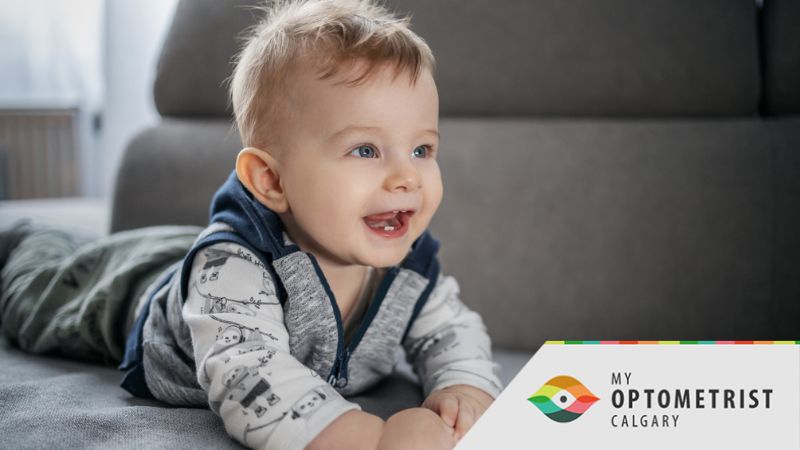
As parents, we constantly monitor our children's growth and development, looking for any signs of potential health concerns. One condition that often goes unnoticed but can have long-term consequences if left untreated is lazy eye, also known as amblyopia. Lazy eye occurs when one eye is weaker than the other, leading to a significant difference in vision between the two eyes. Here are the causes, symptoms, and treatment options for lazy eye. By understanding this condition, we can take early action to ensure our children receive the necessary care to maintain healthy vision and prevent future complications.
Understanding Amblyopia
Vision is a critical aspect of a child's development, as it influences their ability to learn, explore, and interact with the world around them. When a child has a lazy eye, it means that one eye is not functioning properly, leading to blurred or reduced vision. This condition typically occurs during early childhood when the visual system is still developing.
Causes Of Lazy Eye
One of the most common causes of amblyopia is a significant difference in refractive error between the two eyes. This can happen when one eye is nearsighted, farsighted, or has astigmatism, while the other eye has normal vision. The brain gradually begins to rely more on the eye with better vision, causing the weaker eye to become "lazy" or suppressed.
Diagnosing Amblyopia
Identifying lazy eye in a child can be challenging, as they may not be aware of the vision disparity. However, there are several signs that parents should watch out for. These include:
- Squinting or closing one eye: Children with lazy eye often squint or close one eye to try and compensate for the blurred vision.
- Poor depth perception: Difficulty judging distances or clumsiness may indicate poor depth perception, which can be a result of lazy eye.
- Tilting or turning the head: Children may tilt or turn their head to use their stronger eye, minimizing the use of the weaker eye.
If you notice any of these signs, it is crucial to consult an optometrist who can perform a comprehensive eye examination. Early detection is essential because the visual system is more responsive to treatment during childhood.
Treatments For Amblyopia
Fortunately, there are effective treatment options available for lazy eye. The most common approach involves patching the stronger eye, forcing the weaker eye to work harder and gradually improving its vision. This process, known as occlusion therapy, typically lasts for several months. In some cases, eyeglasses or eye drops may also be prescribed to correct any underlying refractive errors.
Vision therapy exercises may also be recommended to improve eye coordination and strengthen the weaker eye. These exercises can be performed under the guidance of a qualified optometrist and often involve activities that stimulate visual processing and enhance binocular vision.
Do you want to know more about amblyopia? Read Things You Might Not Know About Lazy Eye.
Effective Amblyopia Treatment At My Optometrist Calgary
Lazy eye is a common condition that affects children's vision. Early detection and intervention are crucial to prevent long-term vision problems. If you suspect your child may have a lazy eye, consult an optometrist who can provide a comprehensive eye exam and recommend appropriate treatment options. By taking proactive steps, we can ensure our children enjoy healthy vision and the best possible outcomes in their overall development.
The key to great vision for a lifetime is early diagnosis and effective management of any impacts to your eye health and eyesight. The team at My Optometrist uses state-of-the-art equipment for assessments and treatment, and we prioritize patient education. To book an eye exam with one of our eye doctors, contact My Optometrist at one of our three locations at Health First in SE Calgary, Sunridge in NE Calgary, or Three Hills, AB. You can also call us or fill out the online contact form.
FAQ
Q: How is amblyopia diagnosed in children?
A: Lazy eye is typically diagnosed through a comprehensive eye examination conducted by an eye doctor. The examination may involve visual acuity tests, where the child reads letters or identifies pictures from a distance. The eye doctor may also use special instruments to assess the eye's alignment and focus, as well as evaluate the presence of any underlying refractive errors or structural abnormalities.
Q: Can lazy eye be treated in older children or adults?
A: While amblyopia is most effectively treated during early childhood, treatment can still be beneficial for older children and adults. However, the success rate may be lower compared to treatment initiated at a younger age. The treatment options for older individuals may include occlusion therapy (patching), vision therapy exercises, and corrective lenses to address any refractive errors.
Q: Are there any long-term consequences if amblyopia is left untreated?
A: If left untreated, lazy eye can lead to permanent vision impairment in the affected eye. It may result in poor depth perception, reduced visual acuity, and difficulties with activities that require binocular vision, such as sports or driving. Early intervention is crucial to ensure the best possible outcome and prevent long-term consequences. Therefore, if you suspect your child has a lazy eye, it is important to consult an eye care professional for a proper diagnosis and appropriate treatment.